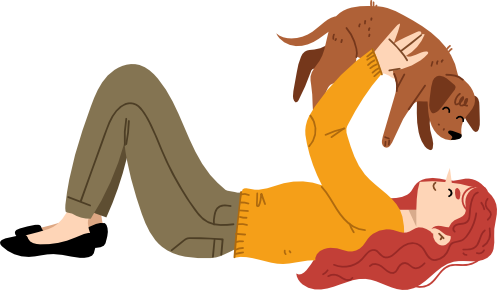Most of our listeners know that Ursa, Kayla and Marissa are all positive reinforcement trainers, meaning they stay far away from punishment at all costs. They would prefer to teach your dog what to do instead of the problematic behavior. Listen as Marissa and Kayla walk you through the 6 reasons to not punish your dog and why your relationship depends on it!
- FRUSTRATION: Frustration is increased because you are not telling the dog what to do instead.
- NEGATIVE ASSOCIATIONS: You run the risk of creating a negative association with something that was not intended. If you pull back on the choke chain every time your dog barks at another dog, she may begin to associate the pressure of that choke chain with the sight of the other dog, not with the barking behavior.
- RELATIONSHIP DAMAGING: The techniques can damage your relationship and change your dog’s behavior in a negative way. This may present as fearful body postures and avoidance behaviors, with the potential of escalating to threat displays, such as growling, snapping, biting.
- LEARNED HELPLESSNESS: Sadly, some dogs shut down. They engage in a learning process, called learned helplessness. When an animal’s attempts to escape aversive events are blocked they tend to give up trying even when their power to escape is restored. Scientists study this phenomenon in many different species and find that after applying an aversive to the learner (for example, shock) the animal stops moving or “behaving” for fear of the applied aversive (Maier & Selligman, 1976). So to some pet parents, they think they fixed the behavior concern since the dog is no longer reacting poorly but we must ask ourselves about the welfare of that animal. There are better ways to teach the learner what you want.
- REMOVE WARNING SIGNS: It is counterintuitive, yet imperative you avoid punishing your dog’s warning signs and communication attempts, such as growling, barking and snapping, to name a few. If you punish your dog for growling, the behavior decreases, which one might consider that successful. However, your dog still feels threatened about the stimulus or scenario that elicited the growl. She may feel even more threatened now that you’re upset with her. The next time she encounters this situation she may not growl – having been punished for this response – but instead, try another behavior such as lunging or snapping. Your plan has now backfired! It’s not the growling that’s the problem, it’s the emotion behind it that needs to be addressed.
- NOT HOW YOU WANT TO BE IN THE RELATIONSHIP: It doesn’t feel good for anyone long term! In that moment, you might interrupt the behavior but it doesn’t create lasting results.
Additional Resources:
- https://journeydogtraining.com/be-more-patient/
- Episode #22: What Would Dr. Pachel Say? https://canineconvos.com/22-2/

